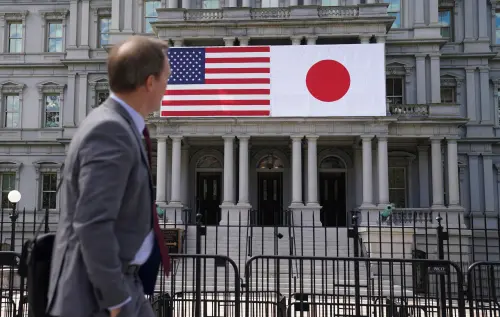This paper explores the changes to the Constitution and defense strategy currently underway in Japan and considers where the nation is headed. To address these questions, it will focus on those changes that could seriously affect or alter Japan’s relations with the United States and neighboring countries. The revisions to the Constitution and the ongoing defense buildup certainly meet this criterion, and are therefore drawing attention from the rest of East Asia, as well as from the United States.
This paper attempts to make the case that Japan is proceeding rapidly on both of the aforementioned fronts, as if to confirm the wisdom that when things eventually start moving in Japan, they tend to do so rather rapidly.1
For instance, within a relatively short period of two to three years, Japan has: (1) sent Self Defense Force (SDF) troops to Iraq; (2) begun maintaining a quasi-permanent maritime presence in the Indian Ocean and the Arabian Sea; (3) decided to implement sea-based missile defense, the first country among the U.S. allies to do so; (4) started to reorient its defense posture toward China; and (5) decided to revise its Constitution, in order to enable the nation to engage in collective self-defense with its ally, the United States. A decade ago, such changes would have been beyond anyone’s wildest imagination. Changes are no less rampant in other areas. The current debate even includes whether the nation should introduce an empress for the first time in more than 230 years; polls show that a large majority favor this change.2 The 1990s, which many dubbed a “lost” decade for Japan’s economy, now seems to have been a fertile period of preparation for the many changes now taking place not just in that sector but across the board.
The rapidity of the development combined with the resultant emergence of a Japan which is not merely an economic giant but also a military power might well have created a widening gap in perception between Japan and its immediate neighbors, most notably China. As a consequence, both Japan and China consider themselves reactive, responding only when the envelope is pushed by the other party.
From the Japanese perspective, China is a revisionist power with renewed territorial ambitions. Yet it may well be that China perceives Japan as no longer a status quo power but one that is involved in U.S. efforts to encircle China. One need not cite works by Robert Jervis3 or John G. Stoessinger4 to know that misperceptions of the motives of one’s perceived adversary have long been a cause of overreaction and military escalation,thereby leading nations to “security dilemmas,” and eventually to war. Hence, the unfolding rivalries between Beijing and Tokyo are a source of grave concern.
“Whither Japan?” is a question this paper as a whole must address. Japan is highly unlikely to move to become a freelance power by distancing itself from its traditional ally, the United States. In fact, the opposite is the case: Japan has chosen to strengthen its political and military ties with America. Hence, a more immediate question is, “Why has it done so?”
The following sections will examine what the new Constitution will look like and include observations on the transformations taking place within Japan’s military. Discussions will follow as to what the drivers are for these changes. The paper will then explore a number of scenarios involving the Taiwan Strait, to shed light on what a new Japan, alongside the U.S., could do in the case of regional contingencies. It will conclude by returning to the basic question: Where Japan is headed?

